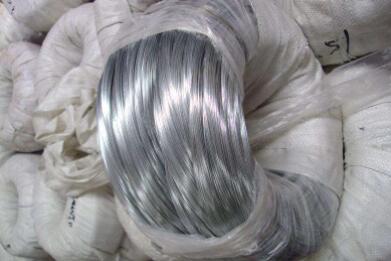Understanding the Properties of Cold Drawn Steel Wire
Cold drawn steel wire is a material that has gained widespread use across various industries due to its impressive mechanical properties and durability. The cold drawing process involves pulling steel wire through a die at room temperature, which enhances its strength and reduces its diameter. This process also affects other properties, making cold drawn steel wire a vital component in construction, automotive, and manufacturing sectors.
Mechanical Properties
One of the primary reasons for employing cold drawn steel wire is its mechanical properties. The drawing process increases the tensile strength of the wire, allowing it to withstand greater forces without deforming. Typically, the tensile strength of cold drawn steel wire can reach values exceeding 1000 MPa, making it suitable for applications requiring high strength-to-weight ratios.
Another significant property is ductility, which measures a material's ability to undergo deformation without breaking. Cold drawn steel wire generally exhibits good ductility, enabling it to be bent and shaped as needed while maintaining its structural integrity. This is particularly important in applications where the wire may need to be coiled or twisted.
Chemical Composition
The mechanical properties of cold drawn steel wire are highly influenced by its chemical composition. Standard cold drawn steel wires are usually made from carbon steel, alloy steel, or stainless steel. The specific alloying elements, such as manganese, silicon, and chromium, can be adjusted to tailor the wire’s properties to specific applications.
In carbon steel wires, increasing carbon content typically enhances hardness and tensile strength but may reduce ductility. Alloying elements serve to improve other characteristics such as corrosion resistance and resilience at elevated temperatures. The ability to modify the composition makes cold drawn steel wire versatile enough for use in numerous environments, from automotive components to construction fixtures.
cold drawn steel wire properties

Surface Finish and Coating
The surface finish of cold drawn steel wire is another important factor influencing its performance and longevity. The drawing process can leave the wire with a smooth surface that is advantageous for applications where friction is a concern, such as in spring applications or bearing components. However, cold drawn steel wire is also susceptible to corrosion, particularly in harsh environments.
To mitigate corrosion risk, various coatings can be applied, including galvanization, which adds a layer of zinc to protect the steel beneath. Other options include epoxy coatings or other protective paints. The choice of coating depends on the intended use of the wire and the environmental conditions it will face.
Applications of Cold Drawn Steel Wire
Given its excellent properties, cold drawn steel wire finds a wide array of applications. In the automotive industry, it is used for making springs, wires, and other components that require high strength and reliability. The construction sector employs it for structural reinforcement, where the wire enhances the overall integrity of concrete and other materials.
Moreover, cold drawn steel wire is also utilized in the production of cables, fasteners, and tools. Its adaptability allows it to be manufactured in various sizes and shapes, catering to specific project requirements.
Conclusion
Cold drawn steel wire stands out as a significant engineering material due to its enhanced mechanical properties, versatility, and adaptation to various applications. By understanding its intrinsic characteristics, manufacturers can make informed decisions in choosing the appropriate type of wire for their specific needs. As industries continue to evolve, the demand for high-strength materials like cold drawn steel wire will undoubtedly grow, further highlighting its importance in modern manufacturing and construction.

















